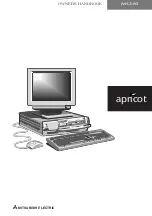
Glossary
129
bus
—An electrical circuit that connects the central
processing unit (CPU) with other parts of the computer,
such as the video adapter, disk drives, and ports. It is the
pathway through which data flows from one device to
another. See also
bus speed, frontside bus
.
bus speed
—The speed at which the central processing unit
(CPU) communicates with the other parts of the
computer.
C
cache
—A section of very fast memory in which frequently
used information is duplicated for quick access.
Accessing data from cache is faster than accessing it
from the computer’s main memory. See also
CPU cache,
L1 cache, L2 cache
.
CD
—An individual compact disc. See also
CD-ROM
.
CD-ROM (Compact Disc Read-Only Memory)
—A form
of high-capacity storage that uses laser optics instead of
magnetic means for reading data. See also
CD.
Compare DVD-ROM
.
Central Processing Unit (CPU)
—The chip that functions
as the “brain” of the computer. It takes information from
outside sources, such as memory or keyboard input,
processes the information, and sends the results to
another device that uses the information.
character
—Any letter, number, or symbol you can use on
the computer. Some characters are non-printing
characters, such as a paragraph break in a word-
processing application. A character occupies one byte
of computer storage.
Charm/charms
—Start screen icons that slide out from the
right side of the screen and direct you to various
Windows
®
functions.
chip
—A small piece of silicon containing computer logic and
circuits for processing, memory, input/output, and/or
control functions. Chips are mounted on printed circuit
boards.
















































